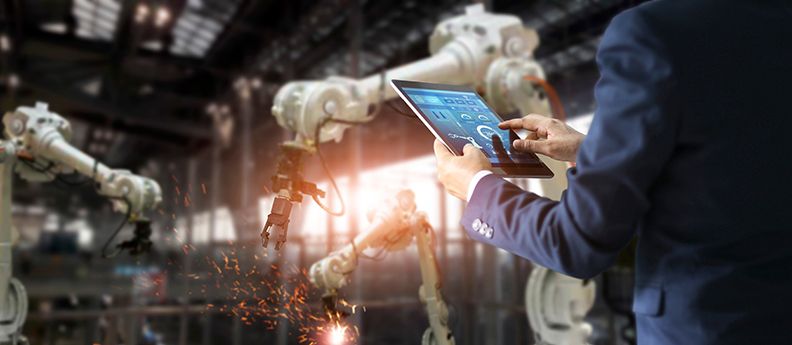
As the industry advances into automation, data exchange, industrial internet of things and other emerging technologies, orthopedic manufacturers are facing a shift in talent acquisition and expectations, with a higher level of technical acumen needed to compete successfully in this space.
Potentially good news is that younger generations are more likely than Baby Boomers and Generation X to consider manufacturing as a career choice, according to the L2L 2019 Manufacturing Index. The index surveyed people who had never worked in manufacturing and found that 26% of millennials and 27% of Generation – those born after 1981 – would consider working in manufacturing, with only 17% of Gen X and 14% of Boomers – those born before 1981 – saying the same. As manufacturing has evolved into a more sophisticated field, the perception that it’s a repetitive job that doesn’t require significant skill or education has begun to change.
“The atmosphere and the environment in manufacturing has definitely changed significantly over the past 10, even 20 years, with Industry 3.0 and the degree of automation and robotics,” said Keith Barr, Chief Executive Officer of Lead-ing2Lean Manufacturing (L2L). “With Industry 4.0 and the degree of automation and robotics, there’s been a significant increase in the technology and skill sets required. With Industry 4.0, that’s even going further because now that we have the integration of information technology and operational technology, the environment on the plant floor is becoming very technical and data-driven.”
While orthopedic manufacturers are in different phases of implementing Industry 4.0 and its use of automation and data exchange on manufacturing floors, they should consider what an Industry 4.0 workforce looks like. Gen Z has grown up in a digital world, and as they begin their careers in the context of Industry 4.0, they may be the answer orthopedic manufacturers are looking for to solve an industry-wide issue.
Addressing the Skills Gap
For years, a gap has widened in the availability of people to do manufacturing work. Two major factors play into the skills gap: an increasingly global economy and access to different markets, as well as the Baby Boomer retirement phase, which will have a huge impact over the next five to 10 years.
The jobs that the retiring workforce leave behind are changing as well, because the degree of sophistication in the systems and technology is increasing. Automation and robotics are likely to take over more manual or repetitive tasks as older workers retire, and new positions will open up that require a higher level of skill.
“The fact that companies are investing in Industry 4.0 on a steady basis means we’re going to have a very different work environment than the retiring worker today has,” Barr said. “To recruit those replacements is going to require us to really educate the potential workforce out there with the kinds of technology, the kinds of challenges and the kinds of opportunity that really exist, if we’re going to compete for those workers over other technical jobs.”
Education (both formal and informal) is a critical component in funneling qualified workers into manufacturing positions. First, knowing about the available opportunities in manufacturing will get the industry on the next generation’s radar, and second, STEM programs and advanced education are needed to develop the core skills required for today’s manufacturing positions.
Notably, coalitions in orthopedic hubs like Warsaw, Indiana and Memphis, Tennessee, as well as individual companies, have started education outreach programs. They’re aimed at training and sharing the benefits of the manufacturing profession with potential and next-generation employees.
A Changing Work Environment
With the advancements in technology and increased skill comes a shift in workforce expectations, as well.
“Millennials and Gen Z want to have access, influence and they want to solve big problems and not just show up and do a job,” Barr said. “They want to have impact. I think finding and connecting those types of things to their perception of manufacturing is going to be important to see results.”
Industry 4.0 isn’t just about the technology advancements themselves; it’s also about creating an environment where those technologies can be successfully implemented. It’s having the right equipment, people and culture in place to leverage the innovations and thrive.
“Industry 4.0 is not just about automation,” Barr said. “It’s about providing an environment where the value of people can be realized at a much greater degree as well. It’s empowerment, it’s providing more information, it’s certainly providing more access. We have to change the systems.”
Historically, manufacturing has had top-down systems wherein a corporate office makes decisions and sets standards. This creates disconnects between corporate and the plant floor and forces workers to get the job done under less-than-ideal conditions.
“We have to change that,” Barr said. “We have to empower the workforce with information, and the focus on systems needs to shift to the worker, not just on the decision support system that leadership needs.”
Industry 4.0 helps support a more mobile, accessible work environment that would draw younger generations to a particular career field. The ability to provide more mobility, easier availability to information and an understanding of the degree of impact any job has is appealing to the Gen Z workforce.
“That access and the ability to solve problems in those areas means that some decision autonomy needs to exist as well,” Barr said. “And that can exist with transparency through digital systems, where the worker could be engaged in solving a problem, and when leadership knows that’s happening, they can provide support for that as opposed to wondering what people are doing about it.”
Addressing the environment to support Industry 4.0 and the next-generation workforce is extremely helpful in recruiting, but it’s also vital to reduce turnover as well. Creating a process and connecting information in that process to empower employees makes them a more valuable asset to the organization.
The Future Manufacturer
As orthopedic manufacturing companies begin to adopt the Industry 4.0 technologies and the environment to support them, they’ll be looking for a particular type of employee to fill those high-tech positions alongside the traditional roles.
The core trades of mechanics, electricians, welders and machinists will always exist in manufacturing. However, because of the level of sophistication in these environments, advanced computer skills are becoming critical.
On the development and networking side, the integration of information technology and operational technology is done through wireless and networking configurations. Networking protocols and the flow of information are critical components of a smooth-running organization. Beyond that, today’s manufacturing organization requires advanced levels of engineering and product development skills.
“Both on the mechanical engineering and the electrical engineering side, there’s significant development and advances in technology that are required,” Barr said. “With 3D printing, we can create very sophisticated objects with-out some of the limitations of conventional manufacturing. Having people understand that kind of automation and that kind of innovative technology is going to be important for the industry.”
The companies that will be successful in Industry 4.0 will not just be throwing money at the situation, Barr said. Having a strategy for increasing visibility to solve problems and creating an environment to foster innovation is vital.
“Companies need to be thoughtful about focusing on the problems they have, and the impediments that exist, and their ability to get to more accessible environments for the workforce, because the workforce is going to solve those problems,” Barr said. “They’re going to innovate; they’re going to continue to bring new items to the market if you create the right environment. And that means changing the way that people work.”
HT
Heather Tunstall is a BONEZONE Contributor.




